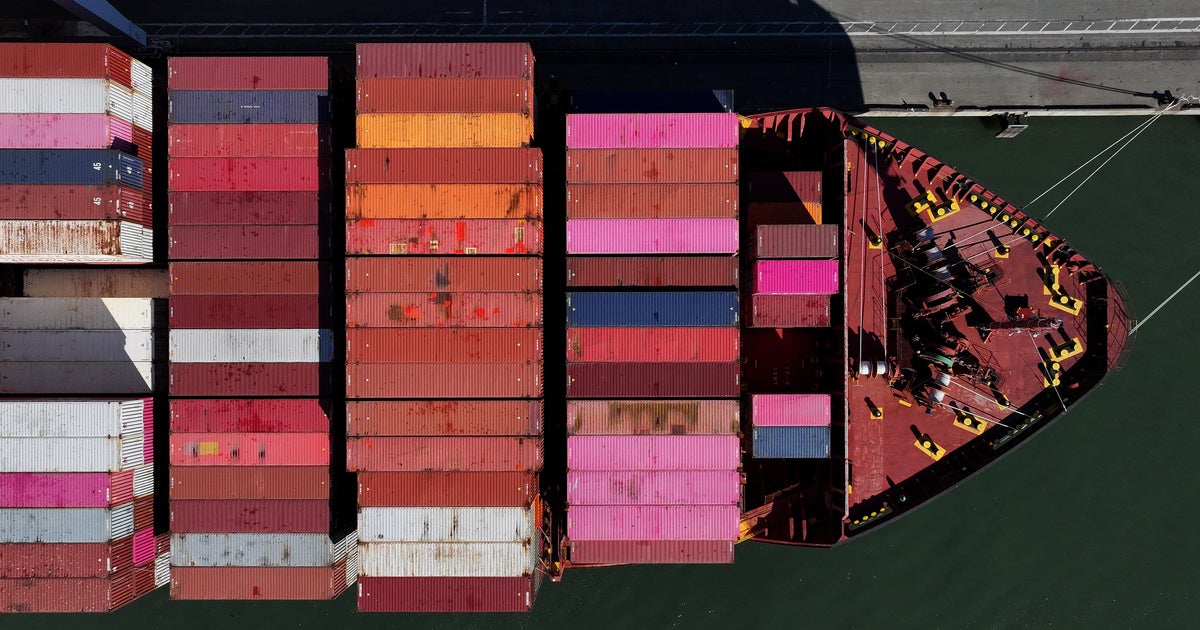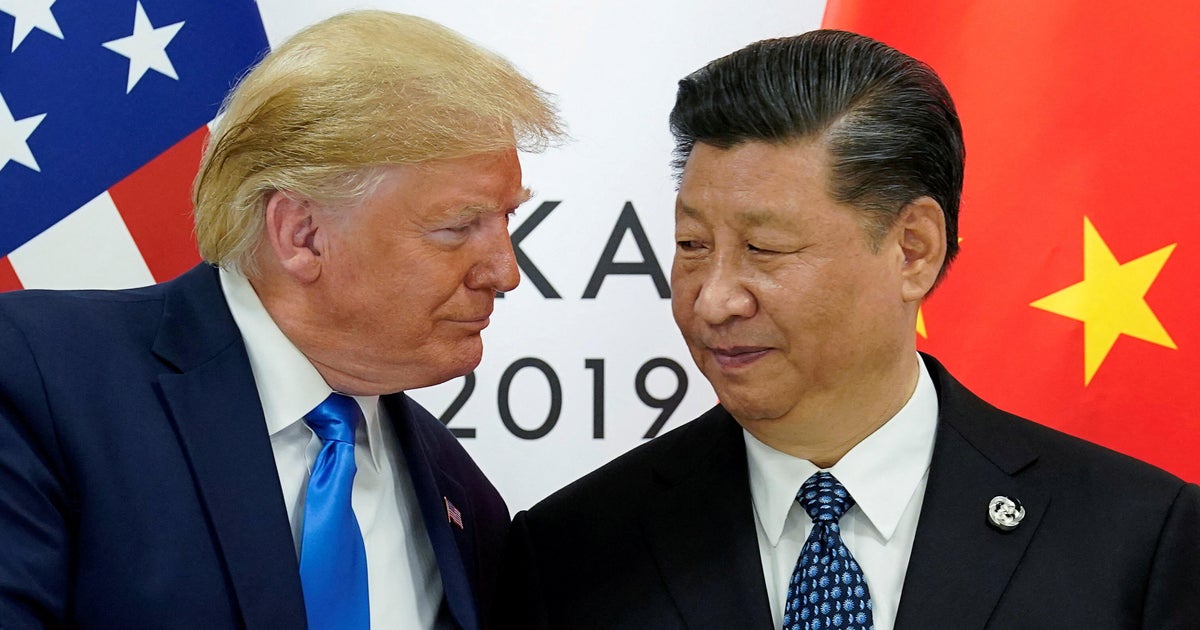See the full list of reciprocal tariffs by country from Trump's "Liberation Day" chart
A global trade war is brewing as the U.S. imposes tariffs on a growing list of countries, heightening concerns about economic growth and roiling stock markets around the world.
President Trump on April 2 announced so-called reciprocal tariffs on imports from about 90 nations that are above a 10% across-the-board tax applied to all imports to the U.S. Describing the announcement as "Liberation Day," the president said the new taxes are needed to erase a trade deficit between the U.S. and other countries, ranging from China to the European Union.
Some nations are facing only the universal tariff of 10%, while imports from dozens of other countries are charged a higher specific reciprocal import levy. For instance, Australian imports face the baseline rate of 10%, while China-made products are now paying an import duty that has jumped to 104% — the reciprocal tariffs combined with previously announced duties of 20% — after slapping its own tariffs on U.S. imports.
"Reciprocal. That means they do it to us, and we do it to them," Mr. Trump said in his April 2 remarks.
However, on April 9 Mr. Trump backed away from parts of his plan, announcing a 90-day pause on the reciprocal tariffs and lowering the tariff rate to 10% for almost all nations. The notable exception was China, with Mr. Trump saying that he's instead raising the tariff rate on the country's imports to 125%.
"Based on the lack of respect that China has shown to the World's Markets, I am hereby raising the Tariff charged to China by the United States of America to 125%, effective immediately," Mr. Trump wrote on Truth Social.
Stocks soared after Mr. Trump's April 9 announcement, with the S&P 500 gaining 8.4% in afternoon trading and the Dow Jones Industrial Average surging 7%. Still, some on Wall Street cautioned that the pause is still on track to end in 90 days, which could signal more volatility ahead.
"The tariff clouds parted for the first time today, but it's too soon to know how sunny the skies will be tomorrow — or 90 days from now," said Daniel Skelly, head of Morgan Stanley's Wealth Management Market Research & Strategy Team, in an email.
Worst-hit countries
Before he announced the pause, Asian nations were set to face the worst of the brunt, with Cambodia facing a tax rate at 49% and Vietnam at 46%, according to Nationwide Chief Economist Kathy Bostjancic.
Mr. Trump also said such levies will boost domestic manufacturing and level the playing field with other countries that impose higher tariffs on U.S. imports than the U.S. charges for their products. Still, economists are forecasting that the tariffs will cause inflation to reignite, while also prompting some trade partners to retaliate with higher tariffs on American imports to their nations.
If the tariffs are maintained by the Trump administration and if other nations impose retaliatory tariffs, both the U.S. and other countries "will suffer serious recessions," said Mark Zandi, chief economist at Moody's Analytics, in an email to CBS MoneyWatch.
China retaliated by saying it planned to impose a retaliatory 34% import fee on American products, followed by Mr. Trump retaliating with plans to impose an additional 50% tariff on its imports and China ratcheting up its rate to 84%.
Full list of Trump's reciprocal tariffs by country
When do these tariffs go into effect?
The reciprocal rates went into effect at 12:01 a.m. on April 9. That's in addition to a baseline 10% tariff which took effect at 12:01 a.m. on April 5.
How did the Trump administration decide what tariffs to charge which countries?
Mr. Trump said his administration determined the tariff rate for each country based on the monetary levies those nations charge on U.S. imports, as well as non-monetary trade barriers like regulations that make it tougher for American products to enter those markets.
The president added that the reciprocal tariffs are still only half the rates charged by those nations on U.S. products, characterizing his new levies as "kind."
Are other countries retaliating against U.S. tariffs?
Yes. China said it would impose a 34% tariff on imports of all U.S. products starting April 10, and then raised the level to 84%. The Chinese Commerce Ministry also said it would implement tighter restrictions on exports of rare earths —materials used in products such as computer chips and electric vehicle batteries — as well impose 27 additional U.S. companies to trade sanctions.
"This is an aggressive, escalatory response that makes a near-term deal to end the trade war between the two superpowers highly unlikely," analysts with investment adviser Capital Economics said in a research note.
The European Union announced on April 9 tariffs on more than $22 billion in U.S. products, including beauty products, soybeans and motorcycles, according to AFP.
"The EU considers U.S. tariffs unjustified and damaging, causing economic harm to both sides, as well as the global economy," the European Commission said in a statement that was issued after EU member states approved the measures.



